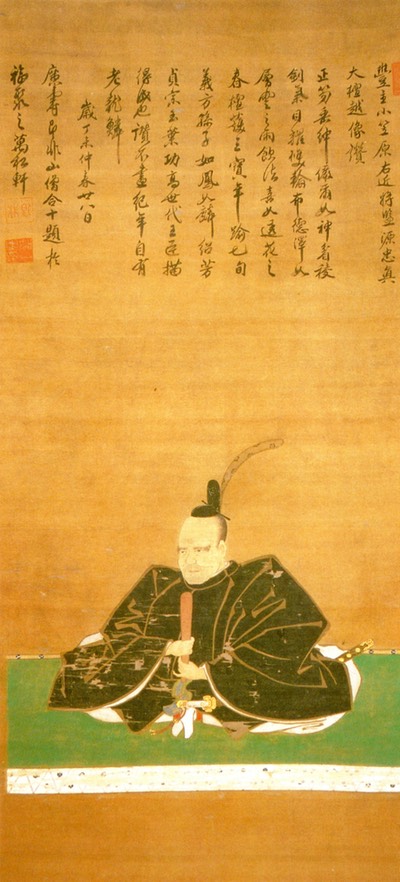Ogasawara Tadazane was the lord with whom Musashi spent the longest and the happiest time. It was probably again through Honda Tadamasa’s offices that, in 1626, not long after his son had followed his master in death, Musashi accepted Tadazane’s invitation to come and live in Akashi and assist him with the construction of the new castle town. With his experience of siege warfare Musashi served as an adviser to the zōei bugyō, the construction magistrate in charge of the whole project. Recognizing the warrior’s artistic qualities Tadazane also put Musashi in charge of the design of the castle gardens of Akashi Castle.
Like Tadamasa, Tadazane was a fūdai, or vassal daimyō, whose role it was to guard the Bakufu against conspiracies by any of the tozama, or outside daimyō, those who had failed to chose the side of the house of Tokugawa in the previous conflicts. Given that much of the initial resistance against the Tokugawa had emanated from western Honshu, it was not surprising that many of the domains to the west of Akashi and Himeji were ruled by tozama daimyō.
It was to form a buffer against these potentially hostile daimyō (and a first line of defense around Osaka and Edo castles, the centers of Bakufu power) that Ieyasu had devised the delicate distribution of fiefs by which the loyal Honda and Ogasawara clans had acquired their new domains. And it was to bolster that first line of defense that, on the specific order of Ieyasu’s son and successor, Hidetada, Tadamasa was ordered to take in hand the construction of Akashi castle and its environs.
The foundations for the new Akashi castle were laid along the coast of the Inland Sea, right at the strategic narrow between the mainland and the island of Awaji. From there any hostile traffic through the Straits of Akashi could be stopped before it reached Osaka. A harbor was built for the small fleet of ships that would police the straits, while a newly laid-out castle town was erected to house all the retainers, mariners, merchants, and artisans who in one way or other served the young lord of Akashi castle.
Ogasawara Tadazane, of course, was also the master of Musashi’s second adoptive son, Iori. Iori accompanied Tadazane to Kyushu following the latter's promotion to the fief in Kokura, serving a succession of Ogasawara notables, and eventually rising to the rank of chief retainer, with a fief of five thousand koku (see Musashi’s Children). Musashi, too, was to join his son in Kokura, although he did so after a string of visits to other places.
Any queries of remarks? Launch or join a discussion at our new FORUM


